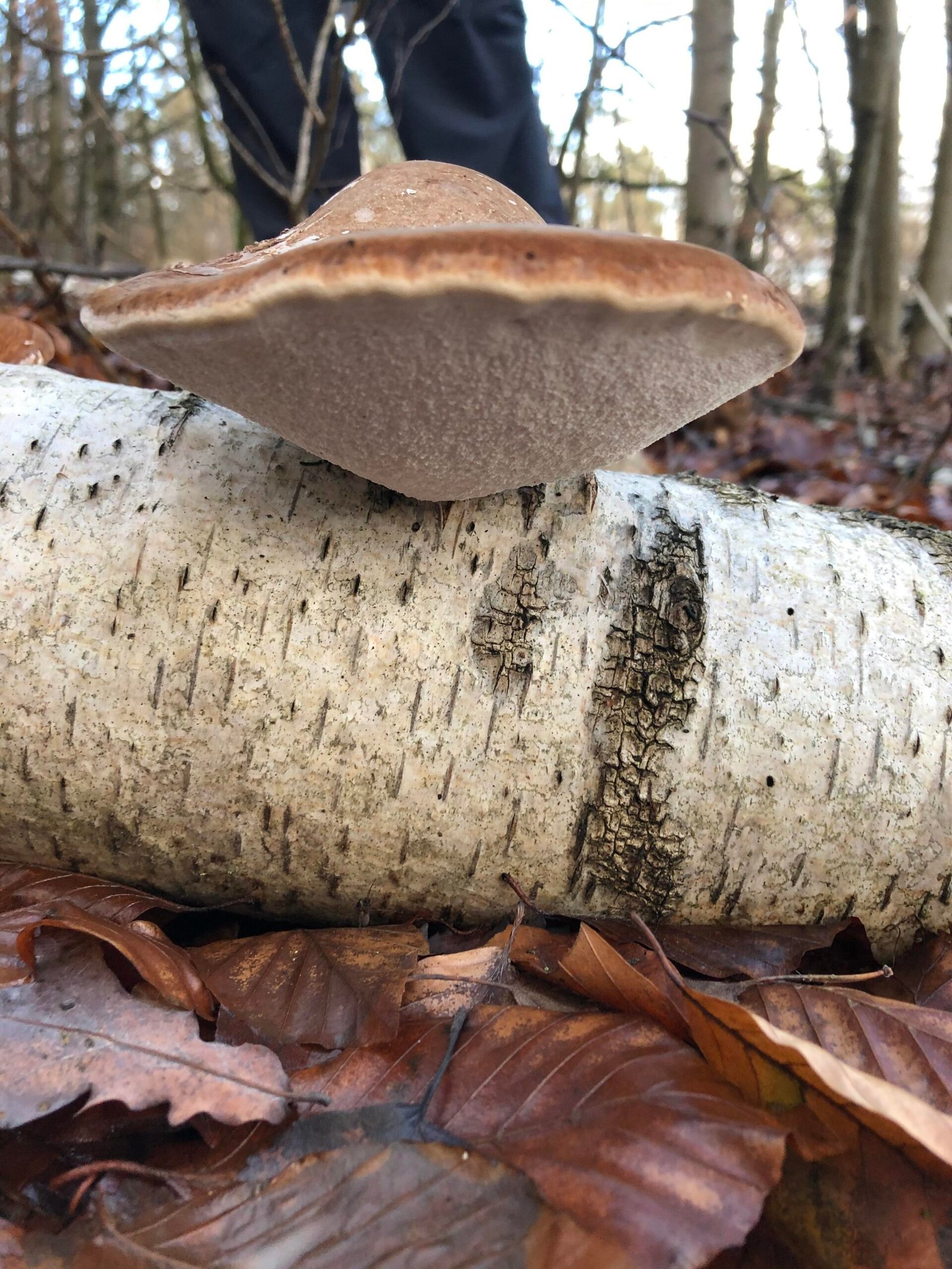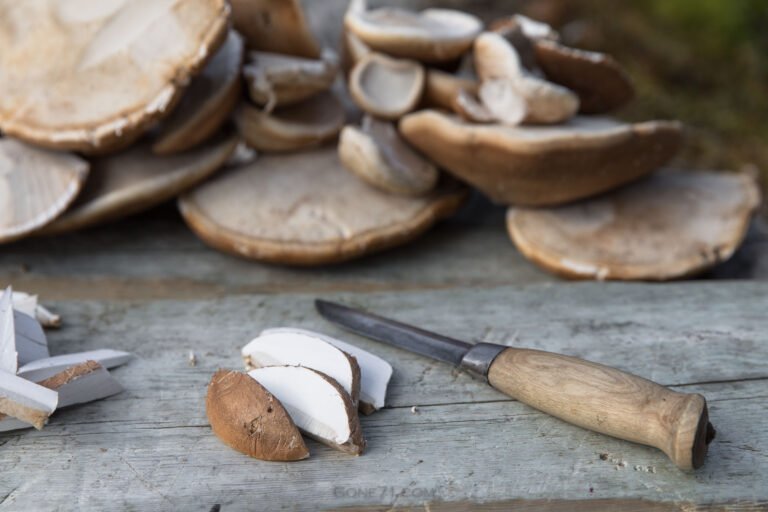Health Benefits
- Antibacterial, antimicrobial, anti-parasitic, antiviral, anti-inflammatory, anticancer, neuroprotective, and immunomodulating activities (Pleszczyńska et al., 2017).
- Demonstrates immune enhancing properties (Grunewald et al., 2018).
- Contains valuable enzymes and other substances such as cell wall (1→3)-α-d-glucan which can be used for induction of microbial enzymes degrading cariogenic dental biofilm (Cariogenic biofilms produce organic acids that can demineralize the tooth mineral) (Pleszczyńska et al., 2017).
- Anti Fatiguing and soothing properties have been noted (Pleszczyńska et al., 2016)
- Anticancer activities verified in human lung carcinoma, human colon adenocarcinoma and human breast cancer and leukemia through in vitro studies (these studies were done using fruiting bodies in the natural environment; not cultivated) (Pleszczyńska et al., 2016)
- A compound within P. betulinus exhibited cytotoxic activity against human melanoma (Khalilov et al., 2018).
- Used in folk medicine for its calming and nutritional properties (Pleszczyńska et al., 2017).
- Fungal tea was used against various cancer types, as an immune enhancing, anti-parasitic agent, and a remedy for gastrointestinal disorders (Pleszczyńska et al., 2017).
- Contains BD Glucans (polysaccharides) have wound healing capacity and biological response modifiers (immunomodulators) (de Jesus et al., 2018).
- The fruiting body can be applied to wounds and the powder obtained from dried birch polypore was used as a painkiller in Russia, Hungary, Romania and the Baltic countries (Pleszczyńska et al., 2017).
- Contains 17 fatty acids, biomolecules with antioxidant properties, betulinic acid, betulin, lupeol (an active triterpenoid) (Pleszczyńska et al., 2017).
References
de Jesus, L. I., Smiderle, F. R., Ruthes, A. C., Vilaplana, F., Dal’Lin, F. T., Maria-Ferreira, D., Werner, M. F., Van Griensven, L. J. L. D., & Iacomini, M. (2018). Chemical characterization and wound healing property of a β-D-glucan from edible mushroom Piptoporus betulinus. International Journal of Biological Macromolecules, 117, 1361–1366. https://doi.org/10.1016/j.ijbiomac.2017.12.107
Grunewald F, Steinborn C, Huber R, Wille R, Meier S, Alresly Z, Lindequist U, Gründemann C. Effects of Birch Polypore Mushroom, Piptoporus betulinus (Agaricomycetes), the “Iceman’s Fungus”, on Human Immune Cells. Int J Med Mushrooms. 2018;20(12):1135-1147. doi: 10.1615/IntJMedMushrooms.2018029154. PMID: 30806295.
Khalilov, Q., Li, L., Liu, Y., Tohtahon, Z., Chen, X., Aisa, H. A., & Yuan, T. (2019). Piptolinic acids F-J, five new lanostane-type triterpenoids from Piptoporus betulinus. Natural Product Research, 33(21), 3044–3051. https://doi.org/10.1080/14786419.2018.1516218
Pleszczyńska, M., Lemieszek, M. K., Siwulski, M., Wiater, A., Rzeski, W., & Szczodrak, J. (2017). Fomitopsis betulina (formerly Piptoporus betulinus): the Iceman’s polypore fungus with modern biotechnological potential. World Journal of Microbiology & Biotechnology, 33(5), 83–12. https://doi.org/10.1007/s11274-017-2247-0
Pleszczyńska M, Wiater A, Siwulski M, Lemieszek MK, Kunaszewska J, Kaczor J, Rzeski W, Janusz G, Szczodrak J. Cultivation and utility of Piptoporus betulinus fruiting bodies as a source of anticancer agents. World J Microbiol Biotechnol. 2016 Sep;32(9):151. doi: 10.1007/s11274-016-2114-4. Epub 2016 Jul 27. PMID: 27465851; PMCID: PMC4963449.



